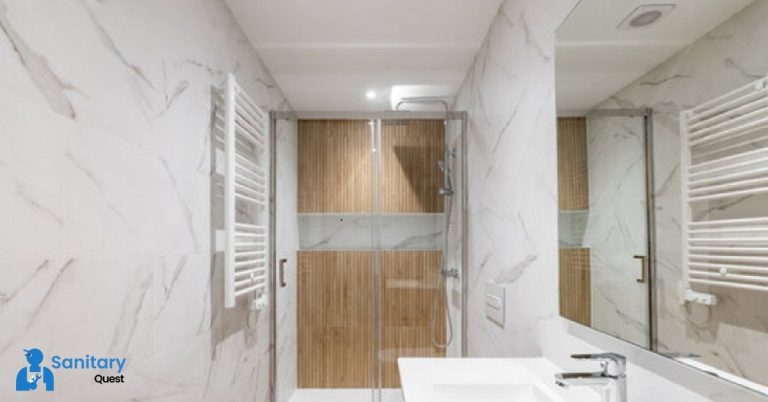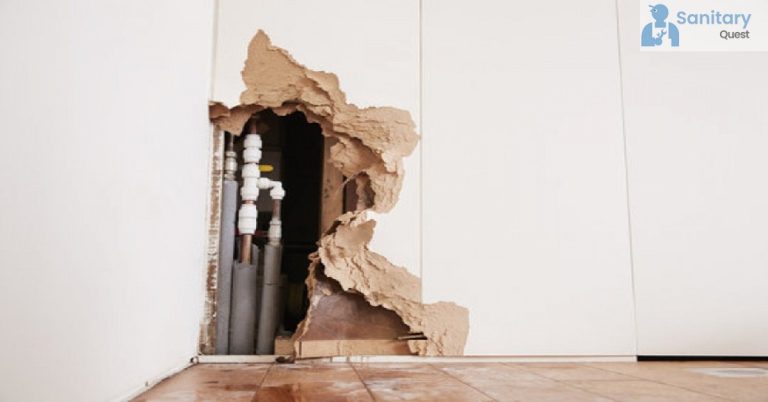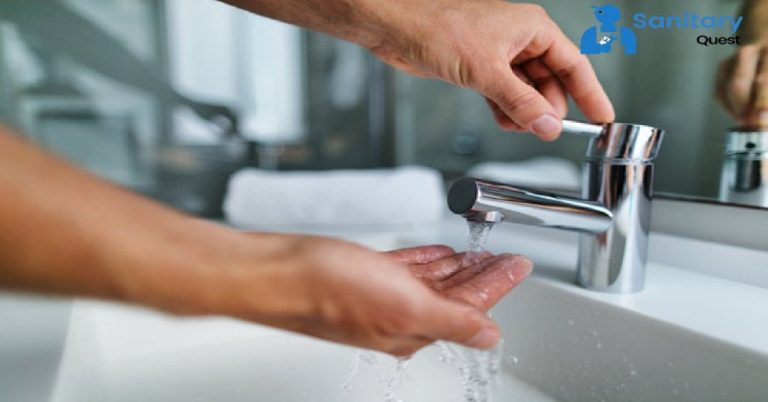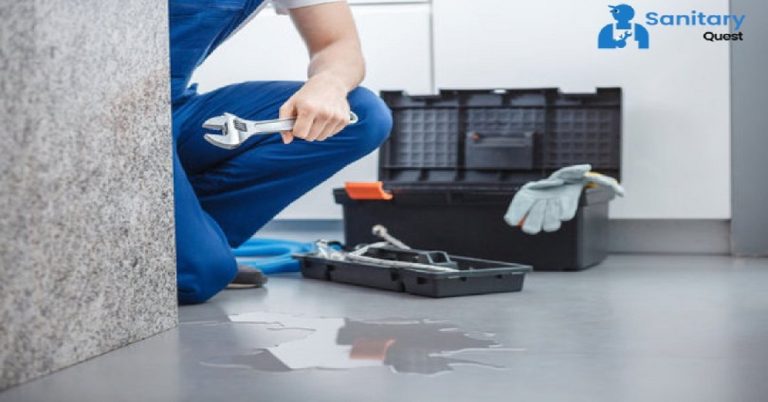Toilet Leaking at the Base? This Could Be the Problem
You don’t realize how important a functional toilet leaking is until one stops operating. Anyone would be understandably alarmed to walk into their bathroom and see water pooling at the foot of their toilet leaking.
A Toilet leak isn’t only unpleasant to deal with; it may also ruin your floor or the walls around it. A toilet leaking at the base may seem like a major issue, but in some cases, you may be surprised to learn that it isn’t. This is why, before you hire a plumber, you should familiarise yourself with the potential causes and how to remedy them.
We have listed four main reasons your toilet leaking may be from the base to assist you in determining if the problem is severe or just an annoyance.
- Condensation in a Bowl or Tank
- Connecting Water Hoses
- Wax Ring
- Loose Bolts in Bathroom Closet
Toilet Leaking Bowl or Tank Condensation
Danger Level: None
Professional Intervention Recommended: No
We would all like to steer clear of the situation in which we call a plumber to come to fix our toilets, only to discover that there was never actually an issue that needed fixing in the first place. Condensation, which is especially common if you live in a more humid environment, is one of the issues that can occur, but it does not require the assistance of a plumber.
First, you should get some paper towels and wipe the bottom of your toilet Leaking to see if the excess water is just a small annoyance or an indication of a more serious issue. When all of the water that was at the base of the toilet has been absorbed, you should flush the toilet.
In the event that water does not collect at the base of the toilet leaking, the issue that you are experiencing is nothing more than condensation. Be sure to keep an eye out for any accumulation of moisture at the base of the toilet leaking, as this could result in damage to the flooring in the surrounding area. In the event that it is required, briefly position some towels all the way around the base in order to soak up any surplus moisture until the condensation goes away. If condensation is present throughout the year, you should think about installing a dehumidifier in your bathroom to reduce the amount of moisture in the air.
Toilet Water Supply Hoses
Danger Level: Low to moderate
Professional Intervention Recommended: In some cases
Does your toilet leaking have one of those little hoses that run from the wall to the bowl? It’s possible that they’re to blame for your bogus loo woes. These hoses may spring leaks or wear out over time. A slow and steady drip from the water line into the floor is possible as a result.
The leak could be coming from the hoses’ connection points to the supply line and/or the tank, or it could be the supply line itself. If you live in a newer house, you may only need to make minor adjustments to the lines to ensure a tight, watertight seal. If you own a dishwasher, this is even more so. You can do it on your own if you have the necessary tools. If tightening the fittings doesn’t stop the Toilet from leaking, you may need to replace the water supply hose. These are jobs for a qualified professional.
Loose Toilet Closet Bolts
Danger Level: Moderate to severe
Professional Intervention Recommended: Yes
You can also check to see if the toilet is securely bolted to the floor. This is something else that you can do. If you can believe it, your toilet leaking connection to the base may become loose over time, which would result in an issue each time the toilet is flushed.
If you look at the bottom of your toilet, you should see two bolts. These bolts are occasionally concealed with caps. A wax ring can be found hidden beneath those bolts. When you flush the toilet, if the wax ring does not create a watertight barrier around the base of the bowl, then water will leak out.
To resolve this issue, your plumber will need to remove the toilet leaking, examine the wax ring for any signs of damage, and then carefully tighten the bolts that secure your toilet to the floor. Only then will the problem be resolved. It may seem simple enough to do it yourself to tighten any loose toilet closet bolts, but if the wax ring is destroyed or if you overtighten the bolts, you will have a greater problem on your hands than you first anticipated. If you overtighten the bolts that are securing your toilet to the base, it might cause the toilet to crack or even shatter. As a result, it is highly recommended to employ the services of a professional.
Toilet Wax Ring
Danger Level: Moderate to severe
Professional Intervention Recommended: Yes
After investigating and eliminating all other possible causes of the leak in question, it is possible that the problem is due to a damaged wax ring.
Wax rings must have a perfect airtight and watertight seal to keep water in. So, how can you tell if your wax ring is the real culprit? One of the telltale signs that it’s time to repair the wax ring in your toilet is the appearance of water at its base. A weak seal might be caused by a void or separation in the wax ring, which could be the case if you notice a rotten egg odor coming from your toilet. As soon as you notice the odor of rotting eggs, contact a plumber.
Also, if your toilet rocks back and forth, it may be time to change the wax ring. Its current perched state suggests that it is supported by a cracked flange. If the toilet cracks because of the swaying, the wobbling issue will quickly become much more serious.
The wax ring cannot be replaced without first removing and then dismantling the entire toilet. Numerous hours are usually needed to finish this procedure. If you want to avoid problems in the future, it’s advisable to hire an expert to do the job.
Professional Plumbing Service
Now that you know more about the possible causes of your toilet’s leak, what should you do? A plumber should be called in to fix a toilet if the problem can’t be fixed by replacing the toilet’s wax ring or closet bolts. In this way, we may rest assured that the work will be done to specification.
Neither of these things is especially challenging, but if done incorrectly, it could lead to additional damage and expensive repairs. If the bathroom floods, the results could be disastrous, but a leaking toilet would just be an inconvenience. Contact the local sanitary quest if water is seeping from the base of your toilet. Because of our extensive experience, we can quickly identify the problem and offer you a range of reasonable options on how to go with fixing it.
FAQs
Q1: What could make a toilet leak at the base?
A leaking toilet at the base is often caused by a deteriorated wax ring or a loose toilet flange. The wax ring seals the connection between the toilet and the sewer drain. Similarly, if the toilet flange, which secures the toilet to the floor, is damaged or becomes loose, it can lead to water seepage around the base of the toilet.
Q2: How can I prevent my toilet from leaking?
To prevent your toilet from leaking, regularly inspect the base for water or moisture, which might indicate a leak. Ensure the connections around the tank and bowl are tight and in good condition. Replace any deteriorated wax rings or damaged flanges to maintain a proper seal between the toilet and the floor.
Q3: What occurs if your toilet seeps?
When a toilet seeps, it can lead to water damage, causing potential issues like damage to the floor, subfloor, or even the ceiling below. It could help mold grow, which isn’t good for health and needs a lot of cleaning up. Additionally, constant leakage can increase water bills and lead to wastage.
Q4: How can I tell if my toilet base is leaking?
If your toilet base is leaking, you might notice water or moisture around the bottom of the toilet. This can appear as puddles or dampness on the floor near the toilet’s bottom. Inspecting for any water accumulation or a feeling of wetness around the toilet’s base is a clear indication of a potential leak.







